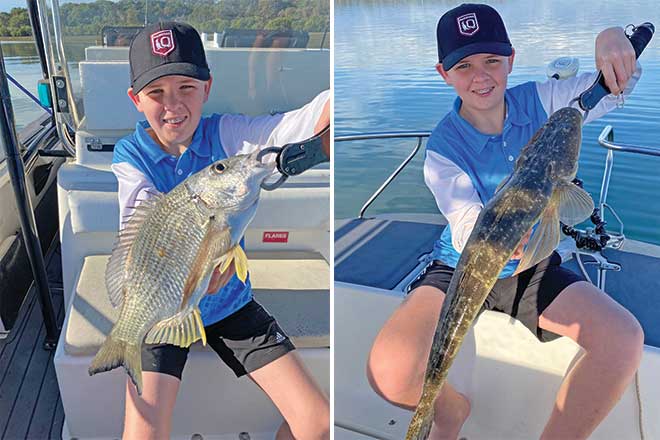Hi crew, it’s been a while since I wrote an article, simply because the weather had been too poor for me to get out. flathead
So lining work up with the weather windows and when the clients could go has meant I’ve done minimal charters over the past 3-4 months.
Hence, I haven’t had a lot to write about.
Luckily, we eventually had a run of good weather and were able to get on the water, putting clients onto good fish and doing some work.
With snapper off the table for a while yet, the species that were in good numbers and very good condition were bream and some solid flathead.
We’ll predominantly be chasing both species during August, probably continuing through until September or early October.
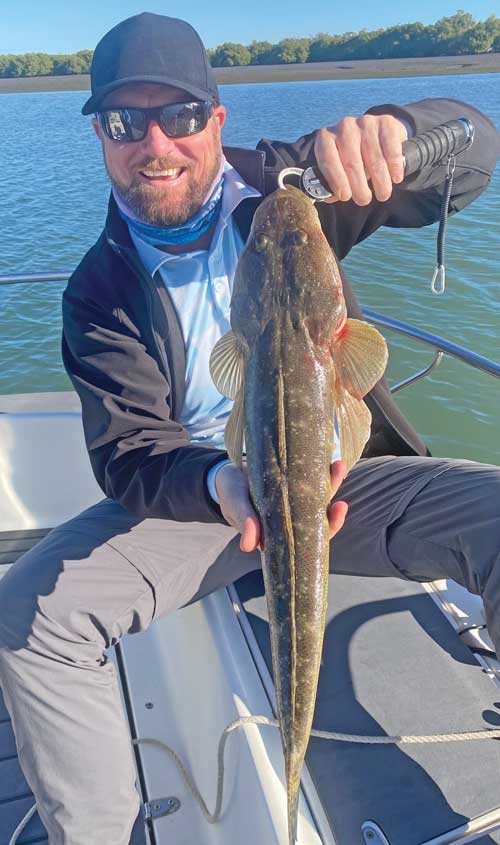
When talking about quality bream, that’s anything from 30-40cm.
Quality flathead range from 50-74cm.
Definitely, the 80cm plus females will be around.
But obviously, if they’re caught, because they are our big breeders, they’re handled gently for a quick photo and are safely released.
So, for fishos wanting to target bream, it will depend on whether you wish to take some home for a feed or if you’re catching fish for a bit of fun, then releasing them.
For those who wish to take a feed home, I suggest you fish for them slightly old school – an 8-9’ glass rod with a nice soft tip, paired with an Alvey or spin reel spooled with 8-10lb monofilament line.
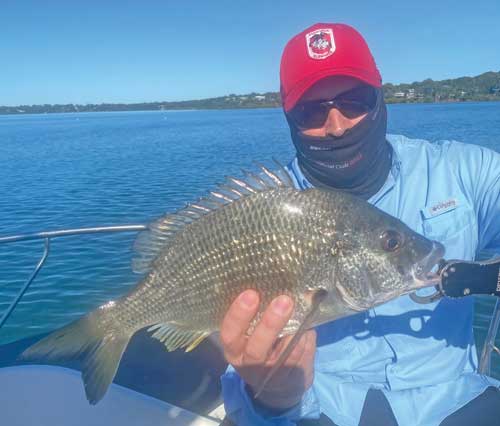
If the bite is really tough, a few people may put a lighter leader on – I’ll usually run 8-10lb through to the hook.
Some days, I’ll put a swivel on, with the sinker above that and a 600mm trace, then the hook.
At other times, I’ll have a very light sinker on top of the hook and that works well, but each to their own.
If you don’t have a preference, try both techniques and use the one that works best for you.
All sorts of bait can be used – pillies, squid, chicken guts, mullet fillet – they all work.
Though chicken breast cut into strips and soaked in minced garlic overnight is fairly hard to beat.

Next is where to target these fish?
I look around the little rocky areas in southern Moreton Bay.
Points where there may be mangroves and some rocks, these areas tend to hold slightly larger fish at this time of year.
Check out areas such as Pott’s Point in close, Iron Stem, rocky areas around Coochiemudlo and Lamb islands, the rocky spots near the powerlines at the bottom of Russell Island, in close at Giant’s Grave and other similar places.
Try these areas on a high as well as a low tide.
Many people forget about low tide.
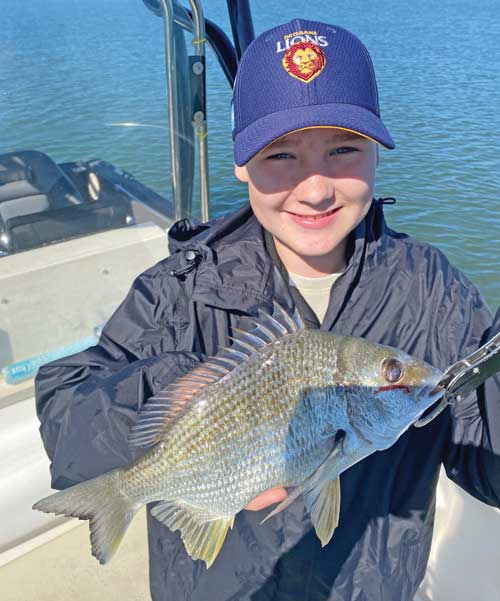
It may not look as pretty but with all that water drained off the banks, there’ll be less water between you and the fish.
Low tide is one of my preferred times to target bigger bream.
If you wish to focus on this species on lures, look at the same areas.
I simply use flathead gear to chase them – a 2-4kg rod with 8lb braid spooled on a 2500 spin reel.
And I prefer surface lures such as little poppers, walk-the-dog style lures, small soft plastics, small vibes… these will all catch bream.
Also, if something isn’t working, change to a different lure in a different colour.
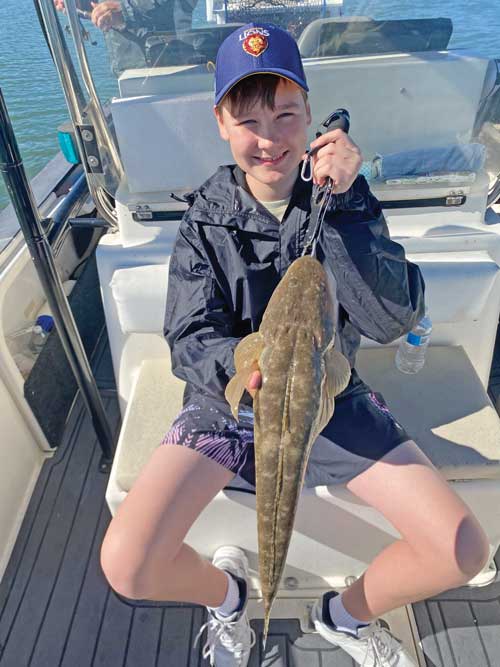
But occasionally, one of the best tricks is to go down to a 5-6lb leader.
While bream tend to spook more when you’re chasing them on lures, something else to try is using plenty of scent.
If you’re chasing them and they get a taste for it, you might be lucky enough that the fish come back to have another strike.
A couple of different techniques for chasing bream – give them a go and see how you get on.
The humble flathead will be prevalent in the coming months and good quality at that.
Whether you wish to target them for fun or take a couple home for the table, there are plenty of ways to target this fish.
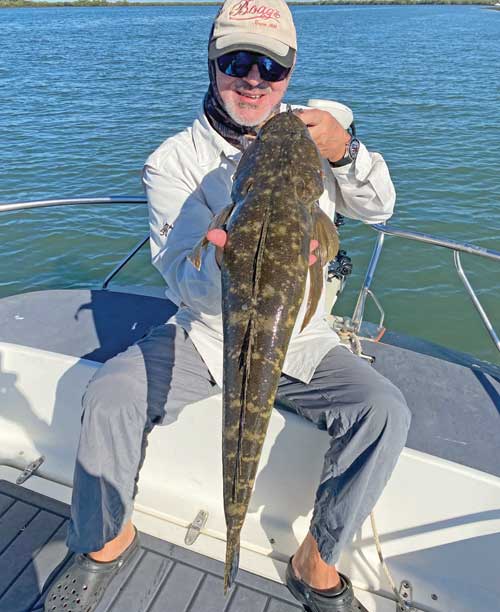
From simple bait to topwater lures and soft plastics – put it in front of their faces and flathead will eat it.
If you want to target flatties on bait, I still recommend an 8-9’ glass rod with a soft tip and 10-15lb mono line spooled on either an Alvey or a spin reel.
My preferred rig is a swivel with a light sinker above it, then at least 600mm of 20-25lb trace and two or three 3/0 hooks ganged together.
Lizards will eat a myriad of bait, ranging from fresh pilchard, mullet fillet, squid, chicken gut to live bait.
If we decided to take a feed of flathead home for the table, this was always a deadly technique for me and my father, when he was around.
Now, if you wish to target flatties on lures, forget about the equipment for catching these fish on bait.
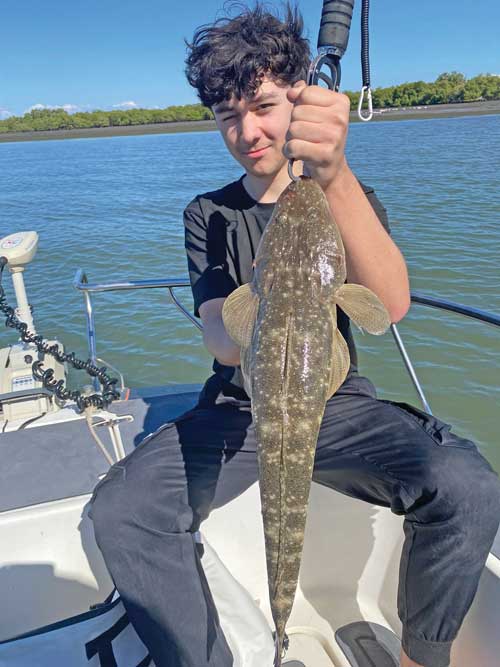
You will – and I’ll say it again, you will – need some form of 2-4kg graphite rod and a 2500 spin reel spooled with 6-10lb braid and a 10-12lb fluorocarbon leader.
Do not tie lures onto your glass rod with mono line.
You’ll make life very hard for yourself if you use the wrong equipment.
Put simply, you’re not going to be able to put enough action on the lure with a glass rod and mono line, it’s as simple as that.
If you asked me what type of lure to use when casting soft plastics, at the moment I’d recommend putting a 1/4oz jig head on with a 3/0 hook and any paddle tail ranging from 3-4” – that simple rig has been working a treat.
If fishing in slightly dirtier water, use darker colours, a much slower retrieve with longer pauses while the lure is on the bottom and plenty of scent.
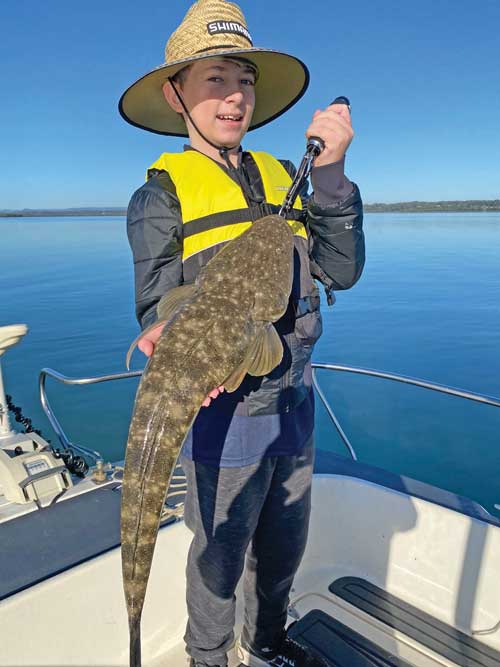
When fishing on clean sand with clear water, use bright colours such as pinks and yellows and have a slightly quicker retrieve, but make sure you still get back to the bottom.
And don’t forget the scent.
Even if these little tips make a one percent difference, they add up and will help your chances of catching fish.
To finish off, the best locations to chase flatties – have a look around the mud banks on a low tide where the last of the water drains off a bank and fish right in front of that drain.
On a high tide, get up against the mangrove line and cast soft plastics or put little hard-bodies on, such as Zerek Tango Shads or Bulldog Cranks, and troll along the edge.
Flathead will be anywhere, from Bribie Island and the Redcliffe foreshore, through the bay islands, all the way down to Cabbage Tree Point and Jacobs Well, and this technique works a treat.
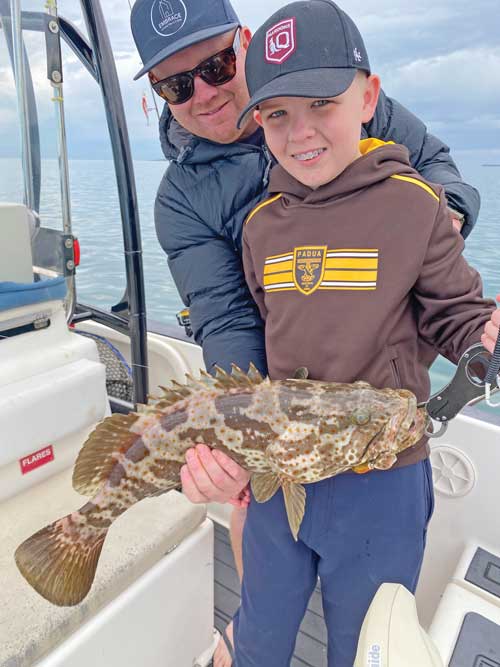
If you’re fishing clean clear water, such as we find near the Jumpinpin-Broadwater area, throw a soft plastic along the edge of a drop-off or where the last of the water drains from a sandbank – these areas hold fish.
Also, with snapper being off-limits until August 15, there’s some space in my diary.
So if you wanted to hone your skills – for the Gold Coast Flathead Classic perhaps – give me a call and we’ll get it sorted – you can practice top techniques in the best areas in the month prior to the competition.
As we all know, with our jobs and lives we are time poor, so if you can learn more to optimise your time on the water, why not – remember knowledge is key.
Until next month, stay safe on the water and, if you’re interested in our fishing tuition or want to do a fishing charter, give me a call on 0432 386 307, send an email to seanconlonsfishing@hotmail.com or check out the Facebook page Seano’s Inshore Fishing Charters and Tuition.
 Bush ‘n Beach Fishing Magazine Location reports & tips for fishing, boating, camping, kayaking, 4WDing in Queensland and Northern NSW
Bush ‘n Beach Fishing Magazine Location reports & tips for fishing, boating, camping, kayaking, 4WDing in Queensland and Northern NSW

